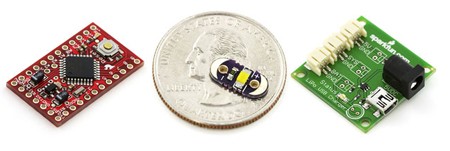
[Aggaz] added 16 potentiometers to his Arduinome.The Arduinome is a monome clone based around the Arduino as a microprocessor. We seen some Arduinome builds in the past but [Aggaz’s] work augments the physical interface.
Potentiometers used in circuit bending allow for manipulation of the sounds coming out of the circuits. In this case the pots are connected to the microcontroller instead of the sound generation circuitry which means you can do whatever you want with them depending on how creative you are with the code. So far he’s just starting to get the new set of interfaces to play nicely over the serial connection. This could end up being quite popular as it only requires the addition of a multiplexer IC, the potentiometers, and the knobs.













